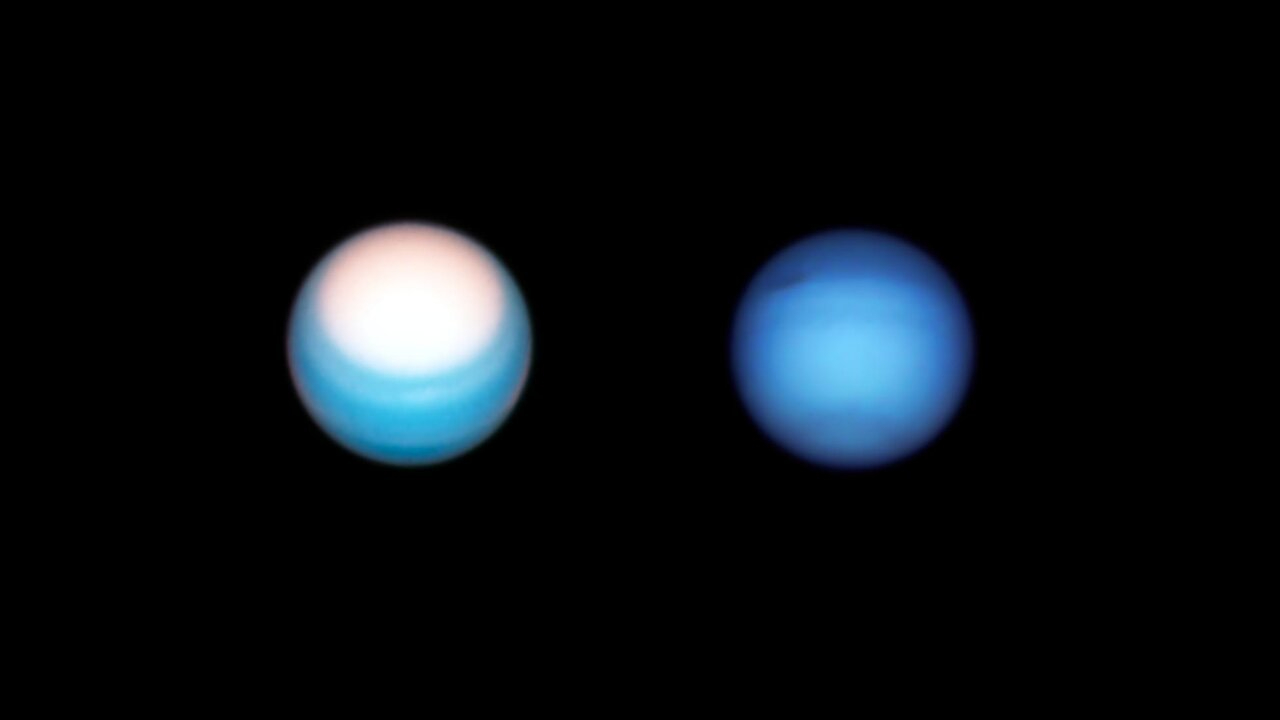Twins planets Uranus and Neptune aren't the same color: Here's why

Astronomers now have an explanation for why Uranus and Neptune have different appearances or colours. Using observations from the NASA/ESA Hubble Space Telescope, the Gemini North telescope and the NASA Infrared Telescope Facility, astronomers have developed a single atmospheric model that matches observations of both planets.
According to the new research, excess haze in the atmosphere of Uranus makes it appear a lighter tone than Neptune. In the absence of this haze, both planets would appear almost equally blue as a result of blue light being scattered in their atmospheres.
The model was developed by an international team of astronomers led by Patrick Irwin, Professor of Planetary Physics at Oxford University to describe aerosol layers in the atmospheres of both planets. The new model consists of multiple atmospheric layers and matches observations from both planets across a wide range of wavelengths.
This is the first model to simultaneously fit observations of reflected sunlight from ultraviolet to near-infrared wavelengths. It's also the first to explain the difference in visible colour between Uranus and Neptune.
The model comprises three layers of aerosols:
- Aerosol-1 - the deepest layer which is thick and is composed of a mixture of hydrogen sulphide ice and particles produced by the interaction of the planets' atmospheres with sunlight
- Aerosol-2 - a layer of haze particles that is thicker on Uranus than on Neptune
- Aerosol-3 - an extended layer of haze similar to the middle layer but more tenuous
The key layer that affects the colours of the two planets is the middle layer - Aerosol-2 The team believes that Neptune's atmosphere is more efficient at churning up methane particles into the haze layer as it has a more active, turbulent atmosphere compared to Uranus. This removes more of the haze and keeps Neptune's haze layer thinner, giving the planet a darker appearance as compared to Uranus.
1/ Using observations from the @HUBBLE_space , as well as @GeminiObs & the NASA Infrared Telescope Facility, researchers explain why Uranus and Neptune are different colours 🔗 https://t.co/FyHC9uNlFl pic.twitter.com/72u0VKwCB5
— HUBBLE (@HUBBLE_space) May 31, 2022










